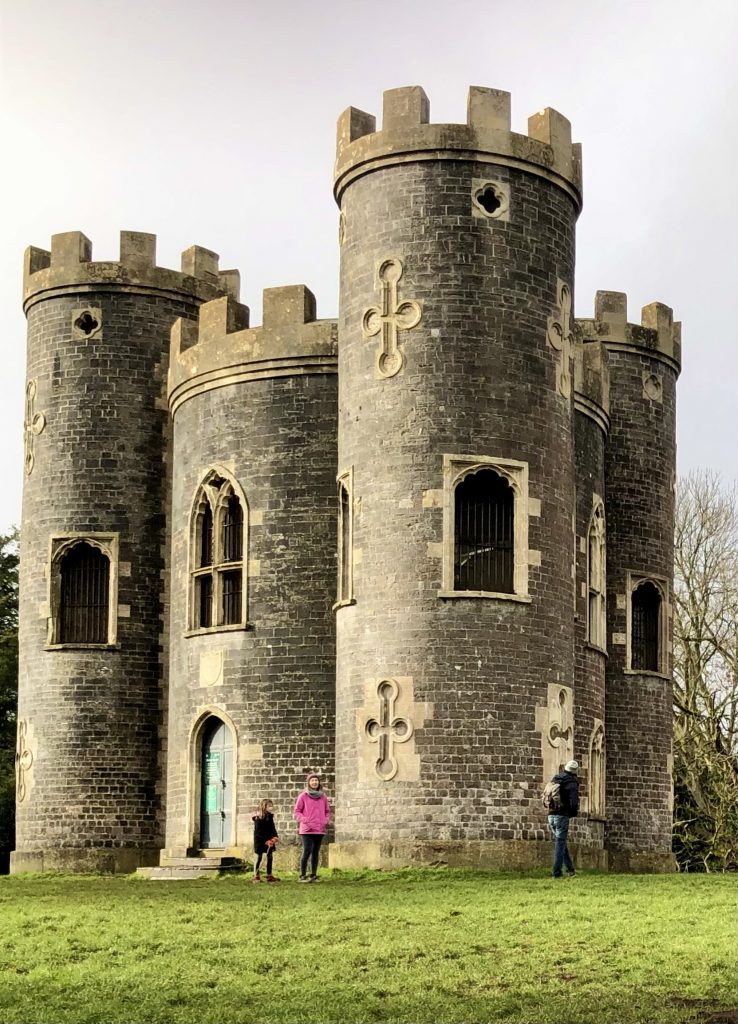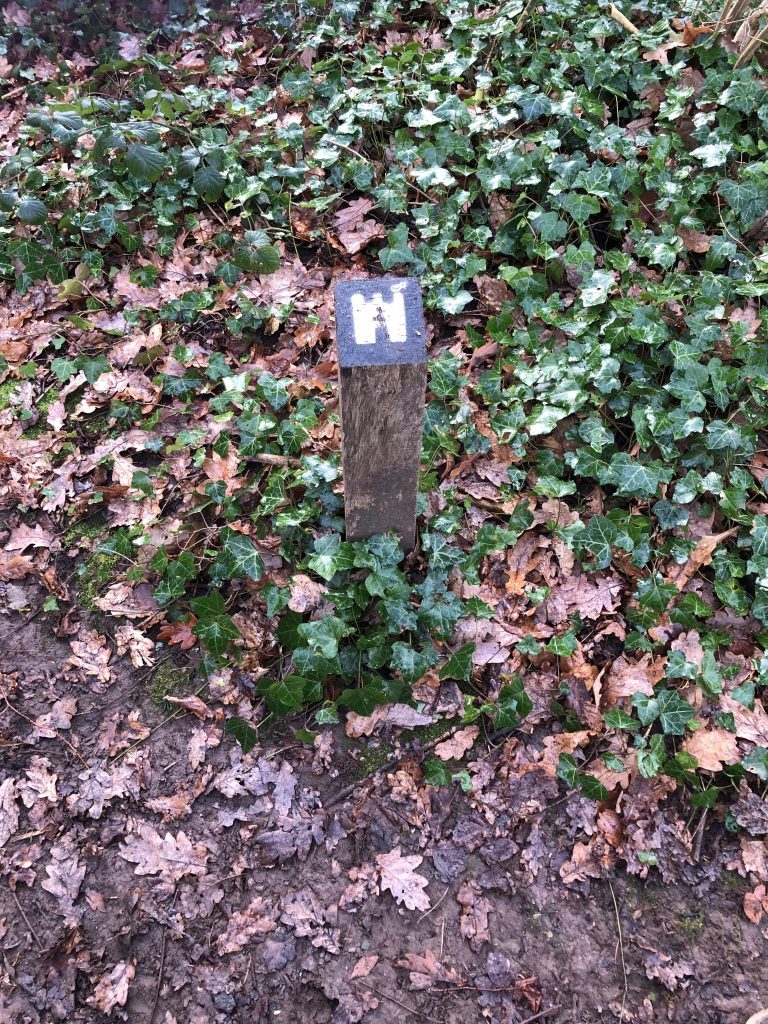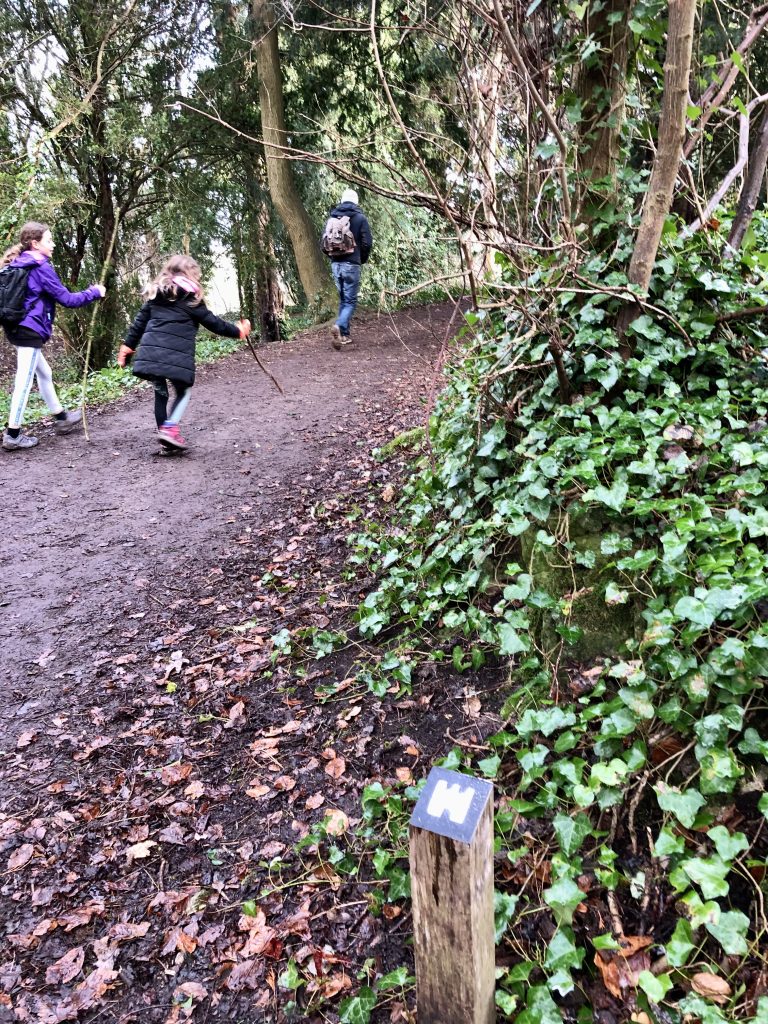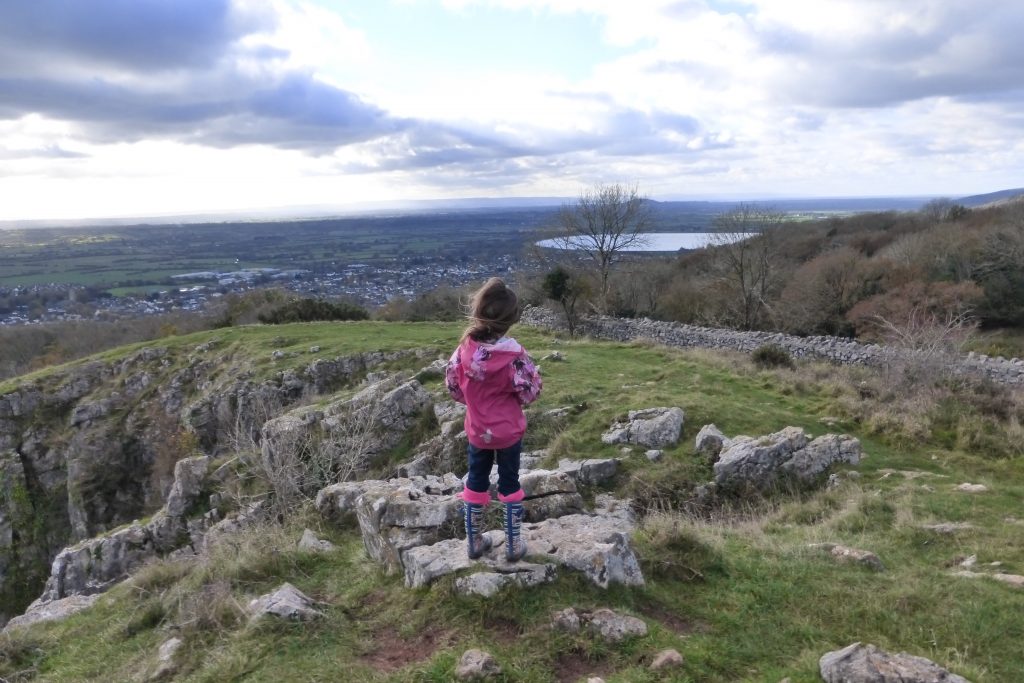Blaise Castle Estate, on the edge of Bristol, is the perfect place for a family walk and day out.
Table of Contents - Tap to jump to a section
ToggleWalk Information:
About Blaise Castle Estate
Blaise Castle Estate is a 650 acre green space located on the outskirts of Bristol. It is only a short drive from North Somerset and it’s a place we visit often as a family.
It’s a great place for young and older explorers alike. The historic landscape has over 20 listed buildings to discover, dramatic scenery, and a large open space where the kids can run about and play. There is so much to explore that an hour quickly turns into a full day out.
The House and Museum

The current Blaise House was built in 1796-1798 using Bath stone in a Georgian style. The owner, John Harford, was a wealthy Bristol Merchant and Banker. Later, he added the beautiful Orangery and Picture Room onto the house, and a pretty thatched dairy where the original house once stood. The Estate was sold to Bristol City Council in 1926 to preserve it from development and is now Grade II listed. Parts of the house are open to the public as a museum of everyday life, highlighting domestic and social history. It is free to visit and there are often events for children in the school holidays.
Blaise Castle

Blaise Castle is a Gothic-style folly built in 1766 on the hill above the gorge. The site was once a Iron Age Hill Fort, and later on the location of a Roman Temple and medieval church.
The castle was perfectly situated to give the owner, a great view of the passing ships along the Bristol Channel.
Although it’s now an empty shell, Blaise Castle was inhabited well into the 20th Century. It was built as a summer house and for entertaining guests. The rooms included a kitchen and a large oak-panelled drawing room with stained glass windows, tapestries and suits of armour. Even Jane Auston mentioned the castle in her novel, Northanger Abbey, where it is described as “the finest place in England”.
Blaise castle was restored by The Friends of Blaise and is occasionally opened up to visitors on Sunday’s in the summer months.
Blaise Hamlet (NT)

Blaise Hamlet is a picturesque hamlet of nine cottages built around a green. The cottages were individually designed by John Nash for John Harford in 1809 to house Blaise Estate pensioners. Built in 1811, the nine cottages are Grade I listed. This also includes the sundial and pump on the green. Each cottage is unique, some with thatched roofs, all with tall brick chimneys and dormer windows, they look like they’re straight out of a fairytale! Blaise Hamlet was gifted to The National Trust in 1943. Blaise Hamlet is definitely worth a visit and the following route includes a walk around the green.
Blaise Estate Parkland
The parkland area is a huge green open space that includes two excellent children’s play areas. The parkland is Grade II listed for its special historical interest.
Kings Weston Down leads off to the South West, parts of which were thought to be a Roman road between Sea Mills and Gloucester. Kings Weston Hill, was once the site of an Iron Age enclosure. You can see the embankment where it once stood. There is an information board with map to read about its history, archeological discoveries and ecological importance.
The Estate also has a large woodland with lots of paths to explore, some little caves to discover, a lily pond and Hazel Brook which is a great place to paddle.
Stratford Mill

Stratford Mill can be found down in the gorge next to Hazel Brook. It dates from the 1700’s. It originally stood on the River Chew near West Harptree and was moved to Blaise in 1956. It was dismantled ahead of the creation of Chew Valley reservoir, saving it from destruction.
How to get to Blaise Castle Estate
Blaise Castle Estate is located near Henbury in North West Bristol. Postcode BS10 7QT.
By Car:
From the M5 South (Jct 18) follow A4 towards Bristol. Turn left on to Sylvan way, left onto Shirehampton Road and continue on to Kingsweston Road;
From Bristol South/city centre and Bath follow A4 towards M5, turning right into Sylvan Way and follow signs to Blaise.
From M5 North, (J17) follow signs for Westbury on Trym, along Cribbs Causeway and Wickbeck Road, turn right into Crow Lane, right into Henbury Road to Kings Weston Road.
By Bus:
Kings Weston Road is served by buses to Cribbs Causeway running via Shirehampton and Avonmouth. Nearby Station Road, Henbury, is served by more direct buses running to Cribbs Causeway via Westbury-on-Trym.
Bus services 1 and 76 from Bristol City Centre to Henbury
By train:
The closest railway stations are Sea Mills, Shirehampton. served by Bristol Temple Meads (4 miles).
Level of difficulty
I would rate this Blaise Castle circular walk as moderate.
About half of this route is paved. But the other half covers rocky, uneven paths, woodland tracks and grassland. There are three sections with steps.
If you want to stick to the paved paths and avoid any steps, you could walk a linear route to Coombe Dingle and back. From the house, instead of walking to the castle, stay on Hazel Brook Drive all the way down to The Dingle and back again.
If you have little ones who can’t walk far, I’d advise you to stay at the top and not venture into the gorge, unless you’re happy to carry them.
Blaise Castle Estate Circular Walk Directions:






















Continue on the path which leads out into an open grassy area on the left. Follow the grassy track straight ahead and walk around the trees to the right (keeping the trees to your right-hand side).

Things to note:
Best time to walk Blaise Castle Estate Circular route
You can walk Blaise Castle Estate at any time of the year. We recently walked the route in January which was perfect for missing the summer crowds. Parts of the route gets muddy after rain.
Facilities at Blaise Castle Estate
A cafe, ice cream van and public toilets can be found near the children’s play areas between the main car park and the house/museum.
What to wear/bring with you
Other things to do around Blaise Castle Estate
- Visit the Wild Place Project, the new location of Bristol Zoo
- Explore Aerospace Bristol, an aviation museum where you can go onboard the last concorde to ever fly.
- Visit Bristol Observatory and Giants Cave. View the Clifton Suspension Bridge from the top of the Observatory through the Victorian, Camera Obscura.
- Walk across Clifton Suspension Bridge, stop at the visitor centre or join a tour.
- Surf lessons at The Wave, or spectate while enjoying a meal.
- Walk in Leigh Woods (NT) with views over the Avon Gorge.
- Read here for a full guide of Things To Do In Bristol With Kids: 35 Family Attractions and Days Out
Read Our Somerset Travel Guides
Somerset Family Adventures is a free online resource. If you enjoyed this blog post and found it helpful, you can say thanks and show your support by buying me a coffee. Thanks so much! You can also sign up to our newsletter to be the first to hear of our new walks and days out.
Share this post with your friends and family, and follow us on our social media. Feel free to tag us in your photos if one of my posts has inspired you to visit.
Share this post: on Twitter on Facebook




